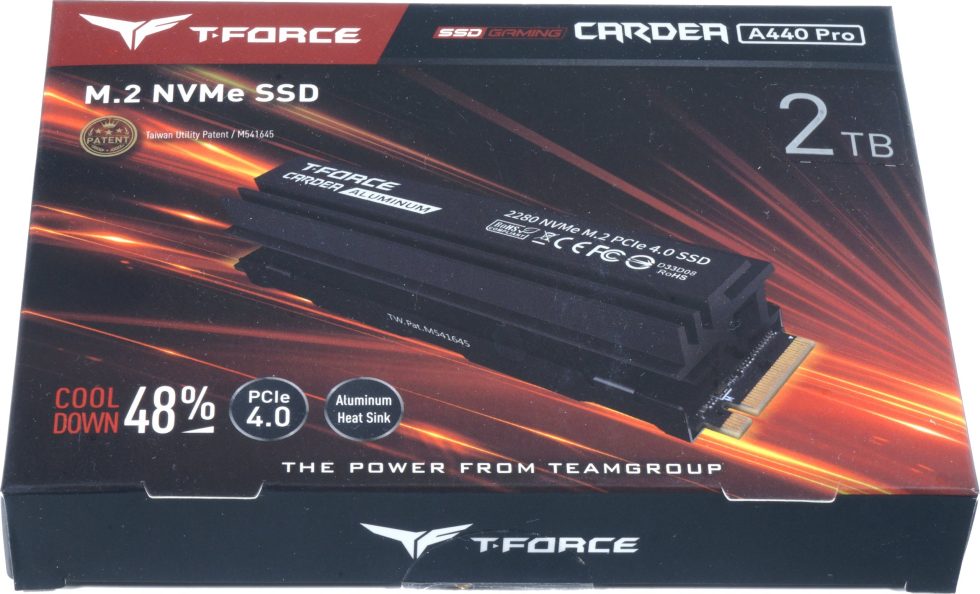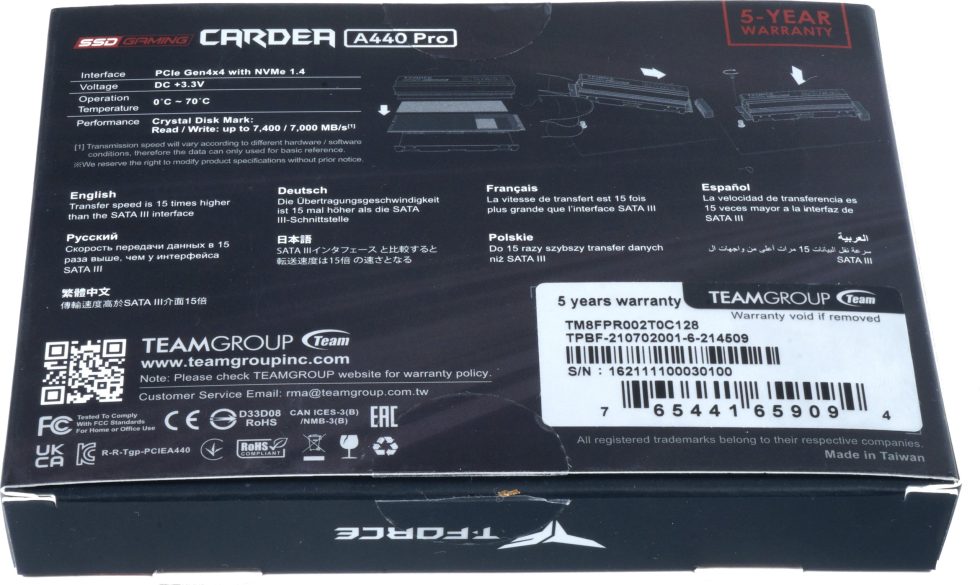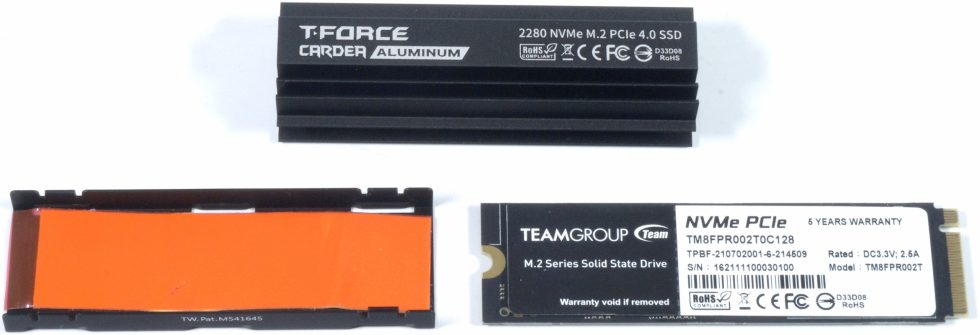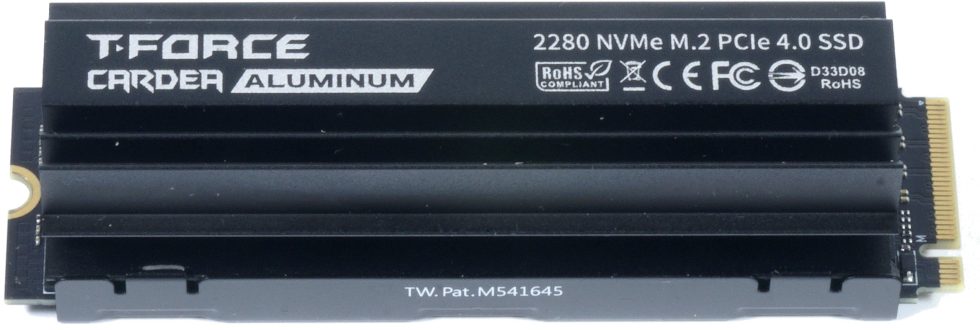The T-Force A440 Pro 2TB (or completely TeamGroup T-Force Cardea Aluminium A440 Pro 2TB) is the latest SSD from Teamgroup and it uses the same genes as the Corsair MP600 PRO XT reviewed a while ago. So Teamgroup does not use the original Micron reference design like e.g. MSI with the SPATIUM M480, but the modified board from Techvest. Differences, if found, should therefore only be due to the firmware or some settings. So it will be interesting to see how that will affect performance later on. In analogy to the competitors, a quite new and fast controller for the 2 TB NAND memory, consisting of 512 GB modules in the form of the new 176-layer TLC NAND (B47R) from Micron, is used with the Phison PS5018-E18.
This SSD has, just like almost all other comparable products with this board, a “dynamic pSLC cache”, about which I want and need to say a few words in the course of the article for a better understanding. But back to the SSD, as the 2TB model available with a current street price of a little under 380 euros (MSRP 400 euros) is quite an interesting affair that also comes in other capacities. Well, unfortunately it’s not really affordable for everyone, because the fun isn’t quite that cheap then again. But she’s fast, so that compensates for many a monetary hiccup up front.
Unboxing, accessories and assembly
TeamGroup includes a decent cooling block and matching thermal pads with the SSD as an accessory (but not pre-assembled), which is definitely a clever idea in times of motherboards with integrated M.2 coolers. Those who trust the motherboard’s M.2 cooler more or prefer to use it for space reasons don’t have to laboriously remove the cooling block first, but simply insert the SSD like this. However, if one needs the cooler, it is also mounted quite quickly and does exactly what it is supposed to do, namely cool.
So in the end, it is purely a question of taste and, above all, of technical necessities as to which variant one chooses. Both are feasible. And since the cooler isn’t anything proprietary, it could even end up being used for other SSDs.
By the way, Teamgroup warns as usual about a loss of warranty if you remove the internal sticker on the PCB back, but the temperatures are even slightly lower without the sticker when in direct contact with the thermal pads of the optional cooling block or the M.2 slot cooler. Tip from me: warm it up with a hair dryer, carefully peel it off and stick it on the plastic insert of the packaging, after you have the sticker let it cool down a bit. It works just as well the other way around and everything goes back to the way it was.
The cooler itself is a section of a nice aluminum extrusion compared to the massive block of the Corsair SSD, and significantly increases the surface area due to the design. Also, the cooler is hollow, so if you blow in case fans, you might even get some draft with a little luck. The fun has even been patented and the cooler then does exactly what it was made for. In my case it worked even better than with the shield of the motherboard. After all, the SSD never exceeded 50 °C even under load. Most of the time, temperatures were even well below that.
For a better overview I have now the data sheet for you, before I defoliate the SSD on the following page and analyze the technology including dynamic pSLC:







































1 Antwort
Kommentar
Lade neue Kommentare
Veteran
Alle Kommentare lesen unter igor´sLAB Community →